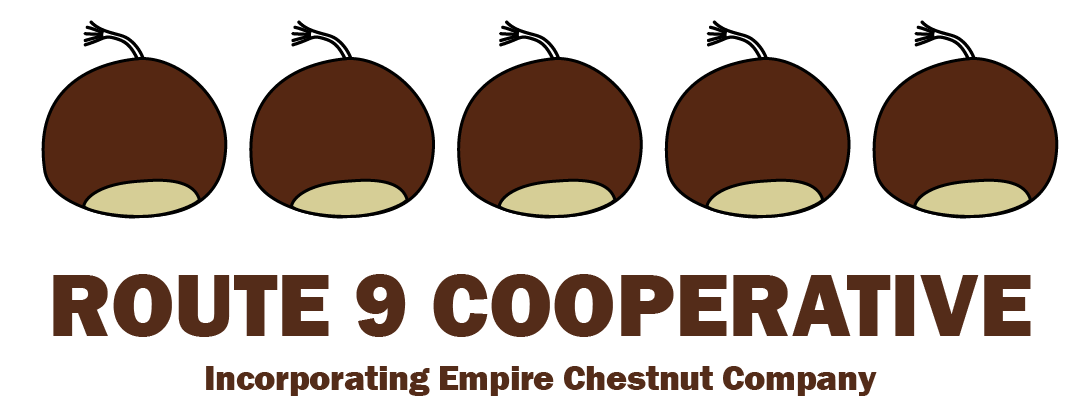Your cart is currently empty!
Pests & Diseases
Chestnut weevils are a big problem. These insects lay eggs in maturing chestnuts that result in “wormy” chestnuts that are unsalable. Chestnut weevils are controlled by spraying, sanitation, and hot water treatment of harvested chestnuts. Controlling chestnut weevils is a major consideration before deciding to plant chestnut trees. It would be extremely difficult to control weevils organically.
Deer are also a big problem. They eat young trees. Bucks rub on middle-sized trees. And they eat the chestnuts as they fall from mature trees. Control options include fencing, caging young trees, repellents, and hunting. Even though a permanent deer fence is expensive, the pay-back period is short considering the tons of chestnuts that deer can eat.
Asian chestnut gall wasp is an introduced pest. They make galls on young shoots as shoot growth commences in spring. Damage can be severe for several years before biological controls spontaneously reduce or eliminate this pest. Gall wasps do not affect nut quality. In areas where gall wasps are long established, they seem to be more-or-less in equilibrium with bio-controls and become a minor pest.
Blossom end rot is a disease that causes a black decay of the blossom (pointy) end of chestnut kernels. It can become a serious problem, affecting 5 to 40% of the crop. For many growers BER has recently become a major problem; it is not known why now and not in the past. One possibility is that a high incidence of BER is related to gall wasp incidence; it looks like the BER fungus attacks galls as well as nuts, making it both a bio-control of an insect pest and a crop disease. Chemical control measures have not yet been developed.
Root diseases such as phytophthora root rot can be deadly to chestnuts, esp to American chestnuts and chinkapins. However, these diseases are less of a problem on well-drained soils, less of a problem in areas where the ground freezes in winter, and less of a problem on Chinese chestnuts, which display substantial resistance. Phytophthora root rot and other root diseases are the main reason that chestnuts will not survive on wet or heavy soils.
Chestnut blight is a serious bark disease (canker disease) caused by a fungus (Cryphonectria parasitica) that is deadly to American chestnuts and slightly less severe on chinkapins and European chestnuts. Chinese chestnuts and Japanese chestnuts carry resistance to this disease, but there is genetic variation in resistance. Growing resistant trees is the only practical control.
Leaf eaters such as Japanese beetles, caterpillars, and Asiatic oak weevils can sometimes cause serious defoliation and warrant control. Most of the time, though, these pests just do minor damage and can be ignored.
